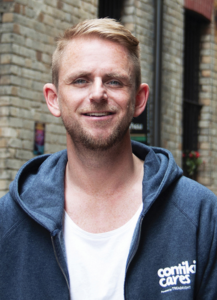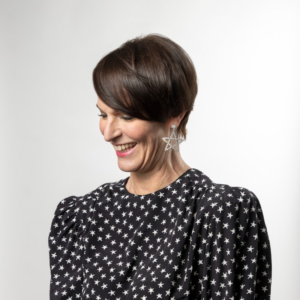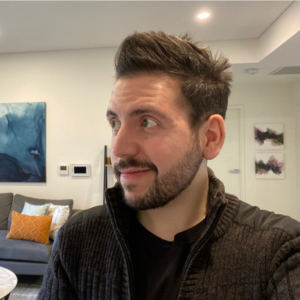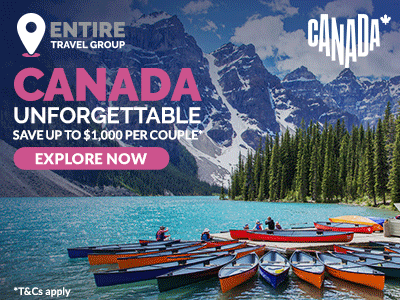EVEN someone as cynical about influencers as I can accept it; travel and social media are a natural pair. Rarely does any online content look quite as salivating as someone else’s holiday, and the magic worked by an influencer can have you hovering over the “book now” button by the end of a five-minute video. In fact, as Contiki Chief Executive Officer Adam Armstrong puts it, “travel and influencers are both aspirational”. The only certainty about influencers as marketing tools seems to be their deployment has changed quickly over their short history.

“We’ve used influencers in a wide variety of cases and over the years their use has evolved,” Armstrong said. Contiki has used influencers in major brand awareness campaigns, through to photo shoots, and small social media posts. However, “their core use hasn’t really changed much,” Armstrong suggested: “to bring our product to a broader and new audience.”
This means what each brand is looking for in an influencer has also changed over this short amount of time. Viking Director of B2B Marketing & Consumer Communications Lee Siefken told travelBulletin these criteria are constantly evolving. “While reach and size of audience is important, it’s not the most important metric,” she believes. “We’re looking for authenticity, engagement, relevance, who is in their community, making sure our target guest makes up the fabric of their following.” Put simply, “we’re looking for a distinct voice that aligns with our brand.”
“Today it’s not always about having the highest numbers, “Armstrong resonated. “We look for influencers who share our values of ‘making every moment count’, celebrating communities and operating sustainably.” Given Contiki is a global company with a diverse audience, it is important for it to use a mixture of voices as part of its influencer strategy, he said. “We have a pretty stringent recruitment policy which asks a lot of questions about them before we consider partnering,” Armstrong added. “It’s about who those people are, whether they fit our target audience, and how actively they are followed.”

What each company is looking for in an influencer is as different as the brands themselves. Travel Associates Global Brand & Marketing Leader Anna Burgdorf said her company is “certainly” considering it; but different to a supplier selling a product, Travel Associates is selling a service, which makes the proposition different altogether. “My team has done a number of strategies and presentations for us to go down that track,” she said. “With the past few years with COVID, we’ve had to focus on really different priorities, and for us, that has been around building our brand as quickly as possible, and making sure Travel Associates is becoming famous for what we do best, which is exceptional service.”
The travel industry will need to change to understand what its clients will want next, Burgdorf agreed, but ultimately, she also holds a view likely to resonate with many on the trade side. “Ideally, for us, our influencers are our advisors,” she said. “They are the ones that have been everywhere and are incredibly expert and credible.”
Contiki is shunning traditional notions of advertising for a fairly simple reason – its millennial customer base is too. “They’re moving away from unreachable aspirations, they don’t want or expect their lives to be filter-perfect, and this extends to their approach to travel,” Armstrong explained. “They gravitate toward influencers and brands who embrace a funny, messy, even weird approach. They want to see real people and they want to see behind the scenes”. This is where influencers come in, he explained. “They’re real people who have access to something other people want; they bridge the gap between brands and customers because they inhabit both worlds.”
Despite their tempting reach, trusting a corporate identity which has been built over years to one individual can be an intimidating proposition. “It is a leap of faith,” Siefken explained. “If you want an influencer collaboration to work, you have to be ready to let go of the steering wheel, so to speak, because you don’t have complete control of the narrative. It’s pointless to collaborate and then force them to follow your brand guidelines to the letter and run everything past you for approval.”
“It’s a partnership but ultimately there is always a risk in working with any third party like this,” Armstrong said. “In the past we were more prescriptive about what we wanted them to do and say”. “Today we try to let them do their own thing to provide more authentic, unstaged, real content. We’re not looking for perfection.” He told travelBulletin of Contiki’s commitment to use “real voices from real communities to reflect genuine, lived experiences”, in order to achieve this genuineness. “We would only use influencers who work within a specific community for a specific campaign,” he explained. “For example, we’d always use people from the LGBTQIA+ community to talk about Pride.”
Contiki is especially interested in partnering with influencers who have their own niche. The company joined forces with self-described “full-time eater” Clare Every, known online as @thelittlelondonvegan, for its Vegan Food Europe Explorer trip. “It’s great to be able to lean into their interests and specialities so you both get the best out of the partnership,” Armstrong said.

Not unlike most marketing strategies, Siefken is happy to admit she has joined forces with influencers on projects which didn’t exactly work out. “Oh trust me, I have had collaborations that didn’t work,” she laughed. The Viking marketing director detailed one instance in which she allowed an influencer to dazzle her with the size of his reach. “It was at the height of his popularity, and I didn’t scrutinise the brand fit,” she explained. “In the end, while his content and storytelling was extraordinary, and my brand reached hundreds of thousands of people globally, it wasn’t the right people.”
However, Siefken conceded in the case of most dud-outs, it often came back to the level of research undertaken, and communication between the two at the beginning of the partnership. One of her top tips is to set very clear expectations and goals with the influencer. “Have a plan for the types of content you want them to create and how you and they will then distribute the content across your communities,” she said.
On the positive side, Siefken detailed an experience in which she once identified a “local up-and-coming micro influencer”, who had a unique voice which aligned perfectly with the brand she was working on. “He had a highly engaged community made up of my ideal customer segment, and his content was stunning, so I partnered with him on a multi-faceted campaign,” she explained. “Not only did we have him share his own brand experiences but we created a series of events together and I commissioned him for exclusive content that I shared across my own marketing platforms for years after.”
The question then begs as to whether or not the travel industry should make greater use of influencers. “Yes and no”, Armstrong conceded. “It’s easy for the travel industry to present only a very staged, glossy, perfectly curated view of travel, using models and actors to tell a story. That may work for some brands, but probably not for most. It really comes down to which influencers you choose and what budget you have to invest in them.”

Adrian Tassone has in no way waited for others to answer this question for him. The Sydney-based travel advisor had a passion for cruising since he boarded his first ship with his family, aged 11, and since then, he has been fuelling his obsession through the online content he consumes. “Eventually that is something that did lead me into the industry,” he admitted. His enthusiasm flourished into his YouTube channel, ‘The Cruise & Travel Guy’, which has more than 10,000 subscribers. His videos have also reached more than two million viewers.
Perhaps most crucially, the platform has also become a feed for Tassone to generate leads for sales, and foster a connection with cruisers who may choose him as their travel advisor. “It’s obviously put me in front of a lot of people that might not have otherwise known me or heard about me and then in turn, when they want to book something, they now have a connection with someone.”
Even Tassone admitted he has only lately become comfortable with the term “influencer” – and not because he recently hit a high a subscriber total or views count. “Until really recently, I didn’t even want to use the word to associate it with myself, “he confessed. “I think that is because I know what the connotation of that word can be.” However the phrase’s implication should not give the industry pause to use an influencer, Tassone believes – or to become one themselves. “I think more people in the industry should and can utilise those sorts of content creation,” he said. “It doesn’t just need to be about ‘this is the dress I’m wearing on deck today’, ‘look at my sandals’, it can really be about providing information and building your reputation as an expert.”
Tassone’s message to cruise lines which may be interested in partnering with him is clear: the content he will produce on board is not going to be “edited or controlled”. “If I am invited onto something to experience it, I will make it clear as to what I will be producing, and if that doesn’t line up with what the company expects, then I don’t think I would do it,” he said.
As the industry has reconciled over the past 10 or so years, expectations and values are key in a relationship between the trade and an influencer, and it is for this reason transparency will be crucial in the future for Tassone.
“That concept of influencing is not always as clear cut as what we hope it is.”






